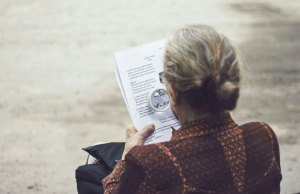‘Never Eat Soggy Waffles.’ Not a bad piece of advice, but actually not a piece of advice at all—instead, an easy way to remember where North, East, South, and West are on a map. This mnemonic device made first grade a whole lot easier. As did ‘My Very Educated Mother Just Served Us Nine Pizzas,’ which made the impossible task of memorizing the order of the planets from the sun possible—except today, of course, ‘Pizzas’ (Pluto) no longer belongs.
Mnemonic devices serve the purpose of helping us remember something. More specifically, it’s a technique using images, sentences, and words to help our brains more easily store and recall important information. And as you can see, it really comes in handy—it was my go-to study tool in school and I accredit many of my impressive test grades to it. Now let’s take a look at some popular mnemonic devices and how they can aid our memory:
Acronyms and Acrostics
An acronym is an abbreviation formed from the first letters of other words, which is pronounced as a word. Take NASA (National Aeronautics and Space Administration) and Navy SEALs (Sea Air Land forces) for example. Another popular one is ROY G. BIV—standing for red, orange, yellow, green, blue, indigo, and violet, all of the colors of the rainbow! But you already knew that, didn’t you? Now, an acrostic is similar but a little different—this is a composition in which certain letters in each line form a word or phrase, like the planet example from earlier; the first letter of each word in ‘My Very Educated Mother Just Served Us Nine Pizzas’ stands for a planet: Mercury, Venus, Earth, Mars, Jupiter, Saturn, Uranus, Neptune, and Pluto.
Rhymes
Rhymes, defined as a correspondence of sound between words or the endings of words, are another popular and helpful mnemonic device that we have at our disposal. These guys are easy to remember because they’re stored by acoustic encoding in our brains; this explains why it’s so easy to memorize lyrics after just the second or third time of hearing a song. A common example of utilizing rhymes as mnemonic devices is, ‘In fourteen hundred and ninety-two, Columbus sailed the Ocean Blue.’ I don’t know about you guys, but I have a difficult time remembering dates, so inventions like this one are definitely helpful.
Imagery
Some people learn more visually, which means images, pictures, and color help them learn. In this case, imagery, often used to memorize a pair of words or as an association tool, can be a very effective mnemonic device. Take, for example, The Method of Loci, a form of imagery used for memorization purposes: You first must picture a familiar place, be it your apartment or even childhood home. The rooms—the bedroom, the family room, the kitchen—then all become the objects of information that you need to remember, as you assign words or concepts to each area. A simpler way of utilizing imagery as a memory technique is associating an image with a small piece of information. For example, upon introduction to someone named Leo, picture a lion; next time you come into contact with him you’ll likely recall this image and, in turn, remember his name.
Chunking and Organization
Chunking is breaking down big pieces of information into smaller groups of manageable data. Think about how important numbers are typically displayed, such as phone numbers, credit card numbers, and social security numbers. They are not listed in a stream, they’re instead broken up into groups of three or four—this caters to our short-term memory, which is limited to roughly 7 items of information. Breaking up larger amounts into smaller chunks makes it easier and possible to remember more.
Organizing information is similar to chunking, in that it’s grouping information together. You can choose to assign information to logical categories (objective organization) or you can take the opposite route and group seemingly unrelated items together (subjective organization)—either strategy is effective. An example of objective organization would be categorizing items of the same color together. And an example of subjective organization would be relating riding a bike to driving a car—the subjects have important differences but you can also make meaningful connections between the two.











